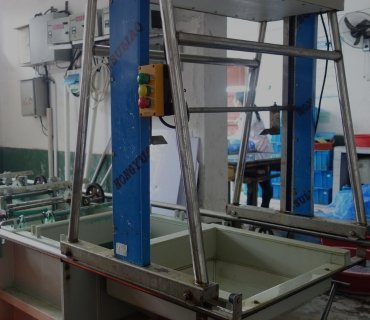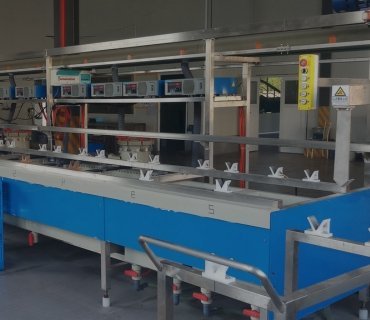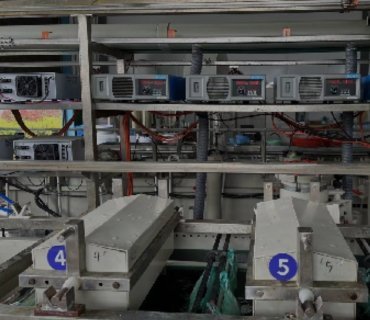Overview
The essence of ceramic electroplating is to place the ceramic in an electrolyte. At the cathode, the metal ions gain electrons and attach to the ceramic surface, while at the anode, the nickel atoms lose electrons. This process is an electrochemical reaction.Ceramic electroplating involves depositing a metal layer (e.g., Ni, Cu, Ag) onto ceramic surfaces to improve electrical conductivity, thermal management, or corrosion resistance.
Nickel Plating Vs Nickel Sintering
| Property | Nickel plating | Nickel sintering |
| process | Movement of nickel ions in the electrolyte, electrochemical reactions | Solid-state sintering of Ni particles, metallurgical bonding between Ni and Mo particles, and interaction between Ni particles and the glassy phase in the metallization layer |
| Structure | The surface of Ni layer is dense and smooth | The surface of the Ni layer is loose and porous |
| Thickness | 3~4 um | 6~10 um |
Unlike traditional metallization (e.g., magnetron sputtering), electroplating is cost-effective for complex geometries and high-volume production. For instance, electroplated Ag layers on zirconia components enhance conductivity while maintaining biocompatibility in medical devices.
Electroplating for Advanced Ceramics
Key Techniques & Innovations
-
Electroless Nickel Plating(chemical plating Ni):
-
Process: Autocatalytic deposition of Ni-P or Ni-B alloys without external current, ideal for non-conductive ceramics like Al₂O₃. Achieves uniform coatings (5–20 µm) with adhesion strength >20 MPa.
-
Applications: Wear-resistant pump seals and semiconductor substrates.
-
-
Pulse Electroplating:
-
Advantages: High-precision Cu/Ni coatings (Ra <0.1 µm) for RF devices, reducing signal loss by 30% compared to DC plating.
-
-
Composite Plating:
-
The Difference Between Chemical Plating and Electroplating
Plating chemical plating Ni electroplating Ni Pre-Treatment immersed in a mixture of HCL or HNO₃ for 4 to 8 seconds, then rinsed in distilled water. immersed in concentrated H2SO4 or concentrated HCL for 5 to 8 seconds, then rinsed in running water and distilled water. Process No current required, pure chemical reaction Requires electric current, involves chemical reaction Adaptable products Suitable for small parts(φ1~φ3mm) fits larger parts, but not small parts. PH of the solution 8.0~8.5 5.2~5.8 In general, the adaptability of chemical plating is slightly worse than that of electroplating and powder method, because the nickel layer is saturated with P, which limits its welding temperature, that is, the welding temperature is less than 780 °C.
Electroless plating uses chemical reactions instead of electrical current, enabling uniform metal deposition on insulating ceramics like Al₂O₃. For example, Ni-P coatings improve wear resistance in industrial pumps by 50%, with adhesion strength exceeding 20 MPa. This method also supports complex geometries, such as internal channels in ceramic insulators.
Pulse electroplating alternates high/low currents to refine grain structure, reducing surface roughness (Ra <0.1 µm). This minimizes signal loss in 5G RF devices and improves thermal dissipation. Compared to DC plating, it achieves 30% higher adhesion and 15% lower porosity.
Key challenges include poor adhesion due to ceramics’ inert surfaces and thermal expansion mismatch. Solutions include laser texturing (creating micro-pores for mechanical interlocking) and intermediate layers (e.g., Ti or Cr) to enhance bonding. For instance, Ti-coated SiC withstands 1,000 thermal cycles without delamination.
Yes. Ag- or Au-plated ZrO₂ components resist HCl (pH <1) and NaOH (pH >12) corrosion. Post-plating passivation (e.g., chromate conversion) further extends lifespan in chemical pumps by 5x.






